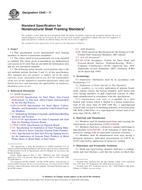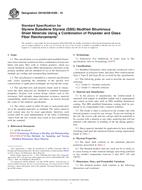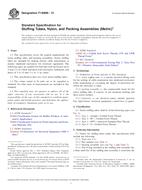1.1 Composition – This specification covers requirements for electrodeposited palladium-nickel coatings containing between 70 and 95 mass % of palladium metal. Composite coatings consisting of palladium-nickel and a thin gold overplate for applications involving electrical contacts are also covered.
1.2 Properties – Palladium is the lightest and least noble of the platinum group metals. Palladium-nickel is a solid solution alloy of palladium and nickel. Electroplated palladium-nickel alloys have a density between 10 and 11.5, which is substantially less than electroplated gold (17.0 to 19.3) and comparable to electroplated pure palladium (10.5 to 11.8). This yields a greater volume or thickness of coating per unit mass and, consequently, some saving of metal weight. The hardness range of electrodeposited palladium-nickel compares favorably with electroplated noble metals and their alloys (1,2).
Note 1 – Electroplated deposits generally have a lower density than their wrought metal counterparts.
| Gold | 50-250 |
| Palladium | 75-600 |
| Platinum | 150-550 |
| Palladium-Nickel | 300-650 |
| Rhodium | 750-1100 |
| Ruthenium | 600-1300 |
1.3 The values stated in SI units are to be regarded as the standard. The values given in parentheses are for information only.
1.4 This standard does not purport to address all of the safety concerns, if any, associated with its use. It is the responsibility of the user of this standard to establish appropriate safety and health practices and determine the applicability of regulatory limitations prior to use.
Product Details
- Published:
- 02/10/2003
- Number of Pages:
- 10
- File Size:
- 1 file , 84 KB


